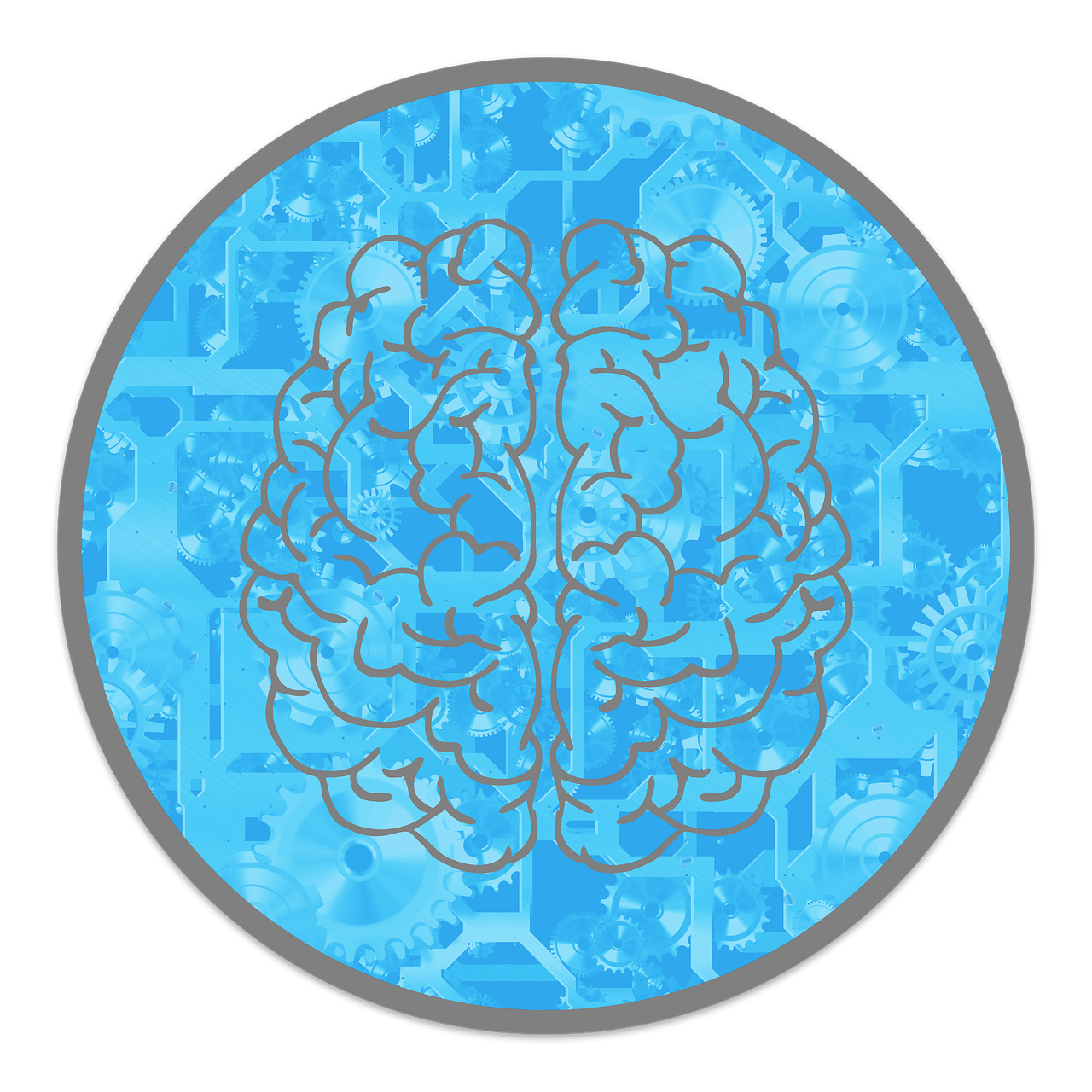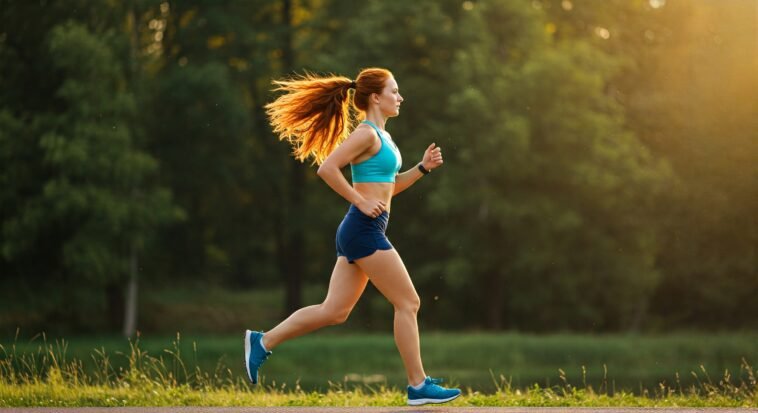
You know that moment after a run when you feel like Beyoncé on stage—powerful, glowing, and somehow totally pain-free?
That’s the famous runner’s high.
And no, it’s not a fitness myth or a weird side effect of dehydration.
It’s real, and your brain is totally in on it.
Basically, when you move your body (like running, dancing, or chasing your dog down the street), your brain drops feel-good chemicals like endorphins and endocannabinoids—yes, your brain has its own chill-out system kind of like natural weed.
These brain boosts can leave you feeling euphoric, calm, and ready to take on the world—or at least the rest of your day.
So next time you’re dragging your feet to the gym, remember: your brain is secretly waiting to throw you an internal dance party.
Cue the music, lace up, and run toward that high.
What Exactly Is a Runner’s High?
Imagine this: You’ve been running for a while—your legs are tired, your shirt is soaked, but suddenly… boom you feel amazing.
Like, Zen-master-meets-Superman amazing.
That’s a runner’s high.
It’s a short, powerful wave of pure feel-good vibes that kicks in after steady aerobic exercise (like running, cycling, or escaping a Zoom meeting).
People say it feels like euphoria, with bonus perks: your stress fades, your mood lifts, pain takes a back seat, and you just feel right.
Here’s what usually comes with a runner’s high:
- That floaty, “I can do anything” mood
- Less stress and anxiety (bye, overthinking!)
- Pain? What pain?
- A calm, peaceful vibe
- Laser-sharp focus like you’re in a meditation montage
Scientists used to think it was all in our heads—like a placebo from pushing through tough workouts.
But now we know: it’s totally real.
Your body actually releases chemicals (like endorphins and endocannabinoids—yes, your body’s version of a chill pill) that help you feel awesome after all that movement.

The Science Behind the Bliss: Endorphins at Work
Let’s talk about the brain’s backstage crew: endorphins.
These little guys are basically your body’s DIY morphine—yep, the name literally comes from “endogenous morphine,” which is science-speak for “made in-house pain relief.”
When your body’s under stress (like during a long run or an awkward family gathering), your brain drops these natural mood-boosters to help you cope.
How exercise triggers endorphins?
When you exercise for a while—especially with cardio like running—your body feels the burn, and your brain says, “Hey, let’s help out.”
It releases endorphins to take the edge off the pain and give you a little mental high-five.
Suddenly, you don’t feel like collapsing—you feel like Rocky charging up the stairs.
There’s real science to back this up: a 2008 study in Cerebral Cortex used PET scans (basically brain selfies) to show that endurance athletes had more endorphin action lighting up the parts of the brain that deal with mood and emotion.
Translation? Your post-run glow isn’t just in your imagination.
Endorphins vs. Endocannabinoids: The new research
For years, endorphins got all the credit for the runner’s high.
But newer research says, “Hold my protein shake.” Another group of brain chemicals, called endocannabinoids, might actually be the bigger deal here.
These chemicals are like your body’s version of THC (yep, the stuff in weed), but made naturally.
They float through your bloodstream during and after workouts, helping you feel calm, chill, and kind of amazing—without the snacks or couch-lock.
What Are Endocannabinoids?
You’ve probably heard of endorphins getting all the glory for runner’s high—but let’s talk about the underdog-turned-superstar: endocannabinoids.
These are natural chemicals your body makes that are a lot like the active stuff in cannabis (yep, weed).
The big difference? These guys are legal, free, and made right inside your brain.
Endocannabinoids help keep things balanced—they play a role in mood, pain, appetite, memory, and even how chill you feel after a long jog or yoga class.
One of the key players here is a compound called anandamide (a name that comes from the Sanskrit word for “bliss”—because of course it does).
In a 2015 study that basically turned mice into tiny joggers, scientists found that exercise boosted endocannabinoid levels.
And when they blocked those chemicals? Poof—no pain relief, no anxiety reduction, and definitely no post-run glow (Fuss et al., PNAS).
Translation: no endocannabinoids, no high.
Other Feel-Good Chemicals Released During Exercise
Sure, endorphins and endocannabinoids are the Beyoncé and Jay-Z of the runner’s high world—but they’re not the only ones making magic behind the scenes.
Your brain throws a full-on chemical dance party every time you work out, and a few other VIPs deserve a shoutout:
1. Dopamine
This is your brain’s ultimate “treat yo’ self” chemical.
Dopamine lights up when you do something rewarding—like finishing a workout, hitting a new PR, or resisting the urge to nap instead of run.
It helps build motivation and makes your brain go, “Let’s do that again!”
2. Serotonin
If dopamine’s the hype, serotonin is the “let’s all breathe and vibe” energy.
It helps regulate mood, reduce anxiety, and boost emotional stability.
After a good sweat session, serotonin levels rise, helping you feel calm, centered, and less likely to rage at slow Wi-Fi.
3. Norepinephrine
Part stress hormone, part alertness wizard, norepinephrine kicks in when you exercise to sharpen your focus and rev up your energy.
It’s like giving your brain a cold brew shot—minus the caffeine crash.

How Much Exercise Do You Need to Experience a Runner’s High?
Sadly, you can’t just jog to the end of the block and expect instant euphoria (though hey, no judgment).
The runner’s high usually kicks in when your body hits that sweet spot of effort + time.
Think of it as your brain’s way of unlocking premium features after a solid workout.
Here’s the unofficial recipe:
- Duration: Aim for 30–60 minutes of steady movement
- Intensity: Keep it moderate to intense—around 60–80% of your max heart rate (basically: sweaty, but not dying)
- Type: Any rhythmic cardio will do—running, biking, swimming, rowing, dancing like you’re in a 2000s music video
Pro tip: Don’t overdo it
If you push too hard for too long, your body’s like “Nope,” and instead of floating on cloud nine, you’ll end up with burnout, soreness, or an emergency nap.
The magic happens with consistent, balanced effort over time—not going full beast mode every session.
Physical and Mental Benefits of a Runner’s High
1. Improved mood and reduced depression
Science agrees: cardio is basically therapy in motion.
A 2020 review (Frontiers in Psychology) showed that regular aerobic exercise helps boost mood and reduce depression and anxiety.
Thank your brain chemicals—especially endorphins and endocannabinoids—for that post-run peace.
2. Natural pain relief
Those same chemicals also work as natural painkillers.
Many runners report feeling less sore—or even forgetting they were in pain to begin with. (Who knew jogging could double as a pain-management plan?)
3. Boosted cognitive function
Need help focusing or remembering where you put your keys?
Exercise sharpens attention, memory, and decision-making—kind of like giving your brain a software update.
4. Stress reduction
That zen feeling after a good run? Not your imagination.
A runner’s high lowers cortisol (your stress hormone), helping your body and mind reset—just like meditation, but with more sneakers.

How to Maximize Your Chances of Experiencing a Runner’s High
Chasing that runner’s high? It’s not magic—it’s chemistry, baby.
And while you can’t summon it on demand like a playlist, you can stack the odds in your favor.
Here’s how to help your brain bring the good vibes more often:
Run outdoors
Sunshine + trees = a dopamine/serotonin cocktail.
Running in nature isn’t just scenic—it actually boosts your brain’s happy chemicals.
Think of it as mood lighting for your workout.
Stay consistent
The more you move, the better your brain gets at dropping those feel-good bombs.
Regular workouts train your body and fine-tune your brain chemistry—like upgrading from flip phone to smartphone.
Fuel properly
A hungry runner is not a happy runner.
Eat balanced meals before and after your workouts so your body has the energy to go and the tools to recover.
You can’t hit peak bliss on empty.
Track progress
Logging your runs—distance, pace, or even how you felt—can keep you motivated.
Every small win gives your brain a little dopamine spark.
Think of it like leveling up in a fitness video game.
Mix it up
Running’s great, but your brain loves variety.
Throw in cycling, swimming, or dance breaks like you’re in a ‘90s workout montage.
Keeps it fun, keeps it fresh.
Run mindfully
Instead of doom-scrolling in your head mid-run, try focusing on your breath, your feet hitting the ground, or the breeze on your face.
It helps your brain soak up the mental benefits, kind of like meditation with sneakers.
Debunking Common Myths About Runner’s High
You’ve probably heard some wild claims about runner’s high. Let’s clear things up:
Myth 1: You need to run a marathon
Truth: Nope. You don’t need to go full Forrest Gump. A steady 30-minute jog can do the trick.
It’s about duration and rhythm—not distance or pain.
Myth 2: Only runners experience it
Truth: This isn’t an exclusive club. Cyclists, swimmers, rowers, fast walkers—if you’re doing steady aerobic movement, your brain’s got a ticket to the high.
Myth 3: It happens every time
Truth: Not quite. The runner’s high is like that flaky friend—it shows up when it feels like it.
Sleep, stress, hydration, mood… they all play a role. Be patient and keep moving.

Final Thoughts: Exercise Is Nature’s Antidepressant
The runner’s high isn’t just fitness fluff—it’s your brain throwing a legit party with feel-good chemicals like endorphins and natural weed-like stuff called endocannabinoids.
Exercise is basically nature’s version of a mood booster, no meds needed.
So, slip on those kicks, hit the pavement, and remember: every step is like giving your brain a happiness upgrade.
Your body’s saying, “Thanks, I needed that!”
Think of it as your own personal remix of Happy by Pharrell—but way sweatier and with fewer dance moves (unless you want to).



